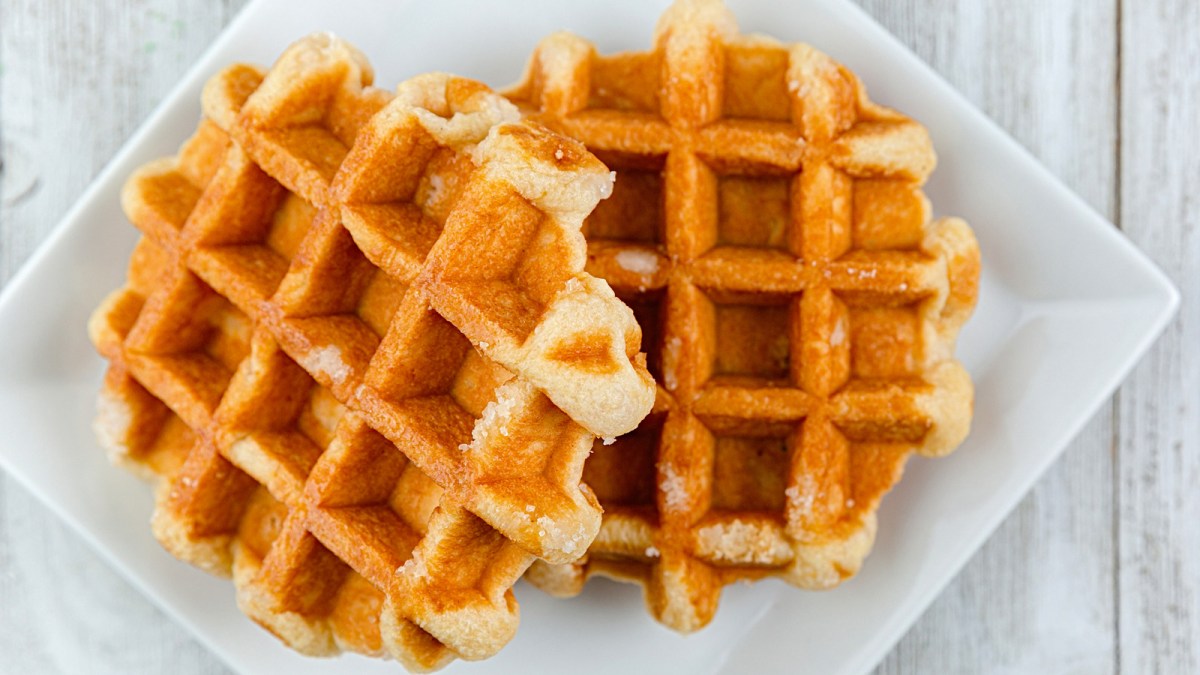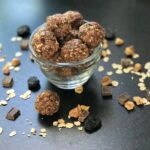Embark on a culinary journey into the world of dairy-free Banting! This guide unveils the secrets to crafting delicious and healthy recipes that adhere to the principles of the Banting diet, while cleverly sidestepping dairy. Discover how to substitute common dairy products, explore a vibrant array of dairy-free ingredients, and master the art of creating balanced meals bursting with flavor. Prepare to transform your Banting experience with this comprehensive guide, offering a wealth of recipes and tips to keep you satisfied and on track.
We’ll delve into the core principles of the Banting diet, highlighting the key differences between traditional Banting and its dairy-free counterpart. Learn to navigate ingredient lists, discover clever substitutions for dairy staples like cheese and milk, and create a personalized shopping list tailored to your dairy-free Banting needs. From vibrant breakfasts to satisfying lunches and dinners, this guide provides a collection of delectable recipes, complete with step-by-step instructions and nutritional information. Troubleshooting tips and techniques for adjusting macros will ensure your success on this exciting culinary adventure.
Essential Dairy-Free Banting Ingredients
Embarking on a dairy-free Banting journey requires a mindful selection of ingredients to maintain the dietary principles while excluding dairy. This involves understanding which foods are naturally dairy-free and finding suitable replacements for common dairy-based products. A well-stocked pantry and refrigerator are crucial for success.
Dairy-Free Banting Food Groups
The cornerstone of a successful dairy-free Banting diet lies in understanding which food groups provide the necessary macronutrients while remaining compliant with the dietary restrictions. Careful planning and ingredient selection are paramount.
- Healthy Fats: These are crucial for satiety and overall well-being. Think vibrant avocado slices, their creamy texture a delightful substitute for dairy-based sauces. Olive oil, rich and fruity, adds a Mediterranean flair to dishes. Coconut oil, with its distinct aroma, is versatile for cooking and baking. Macadamia nuts, with their buttery flavor, offer a satisfying crunch. Grass-fed butter, while containing dairy, can sometimes be tolerated by individuals with mild lactose intolerance (always check labels carefully).
- Proteins: Essential for building and repairing tissues, proteins are readily available from various sources. Lean meats such as chicken breast, a pale and tender source of protein, are perfect. Fatty fish like salmon, boasting a rich, pink hue and delicate flavor, provide healthy omega-3 fatty acids. Eggs, a versatile source of protein, can be prepared in numerous ways. Numerous options for plant-based protein such as lentils, chickpeas, and tofu are available.
- Low-Carbohydrate Vegetables: These provide essential vitamins, minerals, and fiber without significantly impacting blood sugar levels. Leafy greens like spinach, a deep emerald color, add a vibrant touch to salads and stir-fries. Cruciferous vegetables such as broccoli, with its tiny florets, offer a slightly bitter taste and a satisfying texture. Other options include cauliflower, asparagus, and zucchini.
- Healthy Nuts and Seeds: These offer healthy fats, protein, and fiber. Almonds, with their creamy texture, are versatile in baking and snacking. Chia seeds, tiny and black, are packed with nutrients and can be added to smoothies or yogurt alternatives. Flax seeds, a good source of omega-3 fatty acids, provide a nutty flavor and add texture to baked goods.
Sample Dairy-Free Banting Shopping List (One Week)
This list provides a framework for a week’s worth of dairy-free Banting meals, focusing on variety and nutritional balance. Remember to adjust quantities based on individual needs and preferences.
- Protein Sources: Chicken breasts (2 kg), Salmon fillets (500g), Eggs (1 dozen), Canned sardines (2 cans)
- Healthy Fats: Avocadoes (3), Olive oil (1 bottle), Coconut oil (1 jar), Macadamia nuts (1 bag), Almonds (1 bag)
- Low-Carb Vegetables: Spinach (1 large bag), Broccoli (1 head), Cauliflower (1 head), Asparagus (1 bunch), Zucchini (2), Green beans (1 bag)
- Other: Chia seeds, Flax seeds, Coconut aminos (for soy sauce alternative), Unsweetened almond milk (for recipes requiring liquid), Spices and herbs.
Dairy Substitutes in Banting Recipes
Successfully adapting Banting recipes to be dairy-free involves intelligent substitution. Understanding the role dairy plays in recipes is key to finding suitable alternatives.
- Milk: Unsweetened almond milk, coconut milk (full-fat), or cashew milk provide creamy texture and can be used in smoothies, sauces, or baking. The flavor profiles differ, so experiment to find your preference.
- Cheese: Cauliflower can be used to create a creamy cheese sauce alternative, offering a surprisingly similar texture when properly prepared. Nut-based cheeses (cashew, almond) can be purchased commercially or made at home. These may not exactly mimic the taste and texture of dairy cheese, but they serve as good substitutes.
- Yogurt: Coconut yogurt, almond yogurt, or cashew yogurt are readily available and offer a creamy, tangy alternative to dairy yogurt. They can be used in smoothies, dips, or as a standalone snack.
- Butter: Coconut oil or avocado oil can be used in baking or cooking as a substitute for butter. The flavor will differ, but they will provide a similar consistency. Remember to adjust the amount depending on the melting point of the chosen substitute.
Recipe Development

Crafting dairy-free Banting recipes requires careful consideration of ingredient substitutions and nutritional balance. The key is to replace traditional dairy products with suitable alternatives while maintaining the low-carbohydrate, high-fat principles of the Banting diet. This involves understanding the macronutrient profile of your ingredients and adjusting recipes to achieve the desired balance.
Dairy-Free Banting Dishes: A Trio of Recipes
The following table presents three distinct dairy-free Banting recipes—one for breakfast, lunch, and dinner—demonstrating the versatility of this dietary approach. Each recipe includes a detailed breakdown of ingredients, step-by-step instructions, and approximate nutritional information. Note that nutritional information is approximate and can vary based on specific ingredients used.
| Name | Ingredients | Instructions | Nutritional Info (per serving, approximate) |
|---|---|---|---|
| Coconut Flour Pancakes | 2 large eggs, 2 tbsp coconut flour, 1 tbsp coconut oil, pinch of salt, sweetener to taste (e.g., stevia or erythritol) | 1. Whisk eggs, coconut flour, and salt. 2. Melt coconut oil in a pan. 3. Pour ¼ cup of batter onto the hot pan for each pancake. 4. Cook for 2-3 minutes per side, or until golden brown. 5. Serve with berries or nuts. | Calories: 150, Fat: 12g, Protein: 6g, Carbohydrates: 5g |
| Salmon Salad with Avocado | 150g cooked salmon (flaked), ½ avocado (diced), 1 tbsp olive oil, 1 tbsp lemon juice, salt and pepper to taste, mixed greens | 1. Combine flaked salmon, diced avocado, olive oil, and lemon juice in a bowl. 2. Season with salt and pepper. 3. Serve over a bed of mixed greens. | Calories: 350, Fat: 25g, Protein: 30g, Carbohydrates: 5g |
| Chicken and Vegetable Stir-fry with Coconut Aminos | 200g chicken breast (diced), 1 cup broccoli florets, ½ cup bell peppers (diced), 1 tbsp coconut oil, 2 tbsp coconut aminos, spices to taste (e.g., ginger, garlic powder) | 1. Heat coconut oil in a wok or large pan. 2. Add chicken and stir-fry until cooked through. 3. Add broccoli and bell peppers; stir-fry for 5-7 minutes. 4. Stir in coconut aminos and spices. 5. Serve hot. | Calories: 400, Fat: 20g, Protein: 40g, Carbohydrates: 10g |
Dairy-Free Banting Snacks and Desserts
These additional recipes offer delicious and satisfying dairy-free Banting options for snacks and desserts. They highlight the use of alternative sweeteners and healthy fats to satisfy cravings while adhering to dietary guidelines.
These recipes are designed to be quick and easy, perfect for satisfying those between-meal cravings.
- Macadamia Nut Butter Bites: Combine macadamia nut butter, coconut flour, and a touch of sweetener. Roll into small balls and chill.
- Avocado Chocolate Mousse: Blend avocado, cocoa powder, sweetener, and a splash of almond milk until smooth and creamy.
- Chia Seed Pudding: Mix chia seeds with almond milk and sweetener. Refrigerate overnight to allow the chia seeds to absorb the liquid, creating a pudding-like consistency.
- Berry and Coconut Yogurt Parfait: Layer unsweetened coconut yogurt (ensure it’s dairy-free), mixed berries, and chopped nuts in a glass.
- Celery Sticks with Almond Butter: A simple and refreshing snack; pair crunchy celery sticks with creamy almond butter for a satisfying crunch and healthy fats.
Developing a Dairy-Free Banting Recipe
The process of creating a dairy-free Banting recipe involves a systematic approach, beginning with a concept and culminating in a tested and refined recipe. First, identify the desired dish type (breakfast, lunch, dinner, snack, or dessert). Then, brainstorm potential ingredient combinations that align with Banting principles (low carbohydrate, high fat). Consider suitable dairy-free alternatives for common ingredients like milk, cheese, and yogurt. Experiment with different flavor profiles and textures to achieve the desired taste and consistency. Once a recipe is developed, test it, refine it based on feedback, and finally, record the final recipe along with nutritional information. This iterative process ensures a delicious and nutritionally sound outcome.
Troubleshooting and Adaptations
Creating delicious and satisfying dairy-free Banting recipes can present unique challenges, but with a little understanding and adaptation, these hurdles can be easily overcome. This section will explore common problems encountered during the dairy-free Banting journey and provide practical solutions to ensure your culinary creations remain both delicious and aligned with your dietary goals. We will also delve into adapting existing recipes and adjusting macronutrient ratios to suit individual needs.
Common Challenges and Solutions
Dairy-free Banting often requires substituting ingredients to achieve the desired texture and flavor. One frequent issue is finding suitable replacements for dairy products that contribute creaminess and richness. Another challenge lies in maintaining the correct balance of macronutrients without compromising taste or satiety.
- Challenge: Lack of Creaminess. Many dairy-free alternatives lack the richness of cream or butter. Solution: Experiment with full-fat coconut milk, avocado, or cashew cream to achieve a creamy texture. These ingredients also add healthy fats.
- Challenge: Dry or Grainy Texture. Some dairy-free substitutes can result in dry or grainy baked goods. Solution: Add extra moisture by incorporating unsweetened applesauce, mashed avocado, or bone broth. Adjusting baking times can also help.
- Challenge: Off-Flavors. Some dairy-free milk alternatives, like almond milk, can impart a distinct flavor that may not be suitable for all recipes. Solution: Choose unsweetened, unflavored alternatives or experiment with full-fat coconut milk, which offers a richer, more neutral taste.
Adapting Existing Banting Recipes
Transforming traditional Banting recipes into dairy-free versions involves careful ingredient swaps. The key is to maintain the original recipe’s balance of macronutrients while replacing dairy components with suitable substitutes.
For example, a recipe calling for cream cheese in a cheesecake could be adapted by substituting full-fat coconut cream. The texture might differ slightly, but the creamy richness will be retained. Similarly, milk in sauces or soups can be replaced with unsweetened almond milk or coconut milk, depending on the desired flavor profile. Always carefully consider the impact of each substitution on the overall flavor and texture.
Adjusting Macronutrients in Dairy-Free Banting Meals
Maintaining the correct balance of protein, carbohydrates, and fats is crucial in Banting. Adjusting macronutrients in dairy-free recipes requires mindful substitutions and portion control.
For instance, if a recipe relies heavily on dairy for fat content, you might need to increase the amount of healthy fats from other sources, such as avocado oil, coconut oil, or nuts. Conversely, if a recipe uses dairy for protein, you may need to incorporate more protein-rich ingredients like nuts, seeds, or extra meat. Precise adjustments will depend on the specific recipe and your individual macro targets. Using a macronutrient tracking app can greatly assist in this process. Remember to always prioritize whole, unprocessed foods within your chosen macronutrient ratios.
To successfully adapt a recipe, always consider the role of each dairy ingredient. Is it contributing primarily to fat, protein, or texture? Replace it with an alternative that mimics that role.
Mastering the art of dairy-free Banting cooking opens up a world of flavor and healthy possibilities. This guide has equipped you with the knowledge and recipes to create delicious and satisfying meals that align perfectly with your dietary needs. Remember, the key is to experiment, adapt, and enjoy the process of creating your own unique dairy-free Banting masterpieces. With a little creativity and the guidance provided, you’ll be well on your way to a healthier and more flavorful Banting journey. So, step into the kitchen, and let your culinary creativity flourish!
Question Bank
What are the potential health benefits of a dairy-free Banting diet?
Potential benefits can include improved blood sugar control, weight management, and reduced inflammation, but individual results vary. Consult a healthcare professional for personalized advice.
Can I still get enough calcium on a dairy-free Banting diet?
Yes, calcium can be obtained from leafy green vegetables, fortified plant milks, and other sources. Ensure a balanced diet to meet your calcium needs.
Are all nuts and seeds allowed on a dairy-free Banting diet?
While many nuts and seeds are suitable, portion control is crucial due to their calorie and fat content. Check the carbohydrate content of specific nuts and seeds to ensure they align with your Banting macros.
How can I make my dairy-free Banting recipes more flavorful?
Experiment with herbs, spices, and flavorful fats like avocado oil and coconut oil to enhance the taste of your dishes. Adding a squeeze of lemon or lime juice can also brighten flavors.


